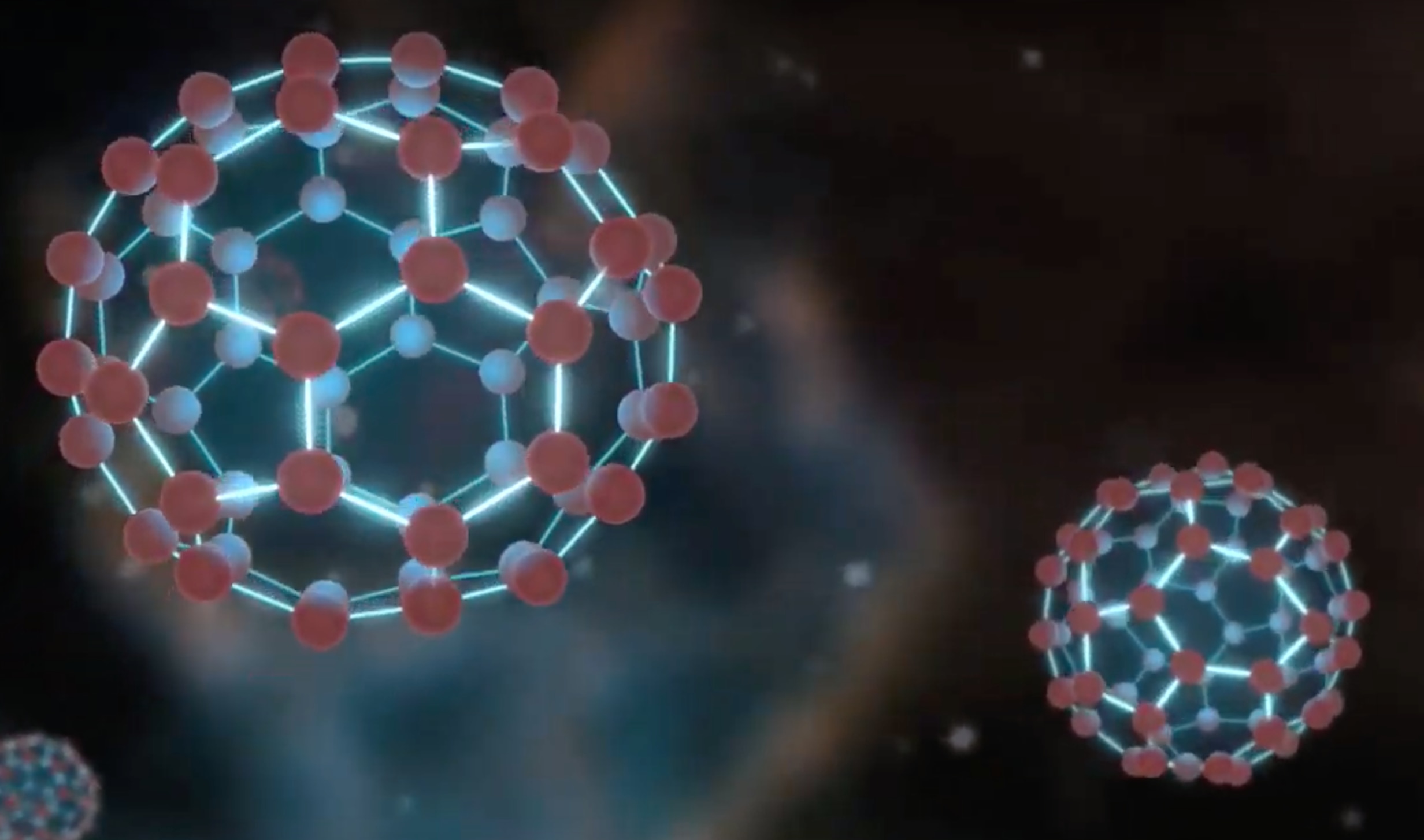Create a free profile to get unlimited access to exclusive videos, sweepstakes, and more!
Space Jello spotted by Hubble is jiggling around the cosmos

If there's anywhere you’d expect to find weird globs of stuff floating through nothingness, it’s space.
NASA has been observing the curious phenomenon otherwise known as buckyballs — spherical carbon molecules that move like Jello — for about a decade, but its Hubble Space Telescope has now eyed even more weirdness. Seems these things have a flavor. Scientists analyzing recent Hubble observations have revealed that they tend to like bouncing around in the spectra of reddish stars; so it’s cherry-flavored Jello, apparently. Dessert references aside, these micro-blobs could tell us things we never imagined about deep space.
As NASA found out after its Spitzer Space Telescope first saw them in 2010, these balls of Buckminsterfullerene (named after artist Richard Buckminster Fuller’s geodesic spheres that might remind you of Disney’s Spaceship Earth) are the largest space molecule we know of. They were first discovered in the clouds of star stuff in a planetary nebula. Made of 60 carbon atoms linked together in a 3D spherical form of pentagons and hexagons, buckyballs form when a star gets rid of carbon-rich material during a certain phase in its life.
Even NASA compared them to Jello — their 174 different vibration patterns make them look like some sort of unearthly gelatin under a microscope.
What Hubble found is even more amazing because it’s the first evidence of charged buckyballs wobbling in the interstellar medium, or the dust and gases that swirl between stars. The team of scientists behind the new study, recently published in The Astrophysical Journal Letters, zeroed in on bands of light emitted by 11 stars. As starlight passed through the interstellar medium, the energy wavelengths, or spectra, of those light bands were scanned with the new Space Telescope Imaging Spectrograph (STIS). Light absorption signals told them they had found buckyballs.
STIS is more accurate than Hubble at separating signals from background noise when it records those signals, and what excited the team about this is that it can give us a better idea of what kinds of molecules we can expect to unearth in deep space. As for the cherry (or strawberry) “flavor,” the most buckyballs were found in the spectra of red stars because these stars appeared that way as a result of light diffusion in the interstellar medium. They weren’t found bouncing around other stars.
What scientists want to find out now is the relationship buckyballs have with stars and planets far beyond our own. They have the potential to illuminate aspects of interstellar physics. Could this mean the possibility of finding carbon-based life forms, like us and everything else that lives on this planet, somewhere out there? Nobody knows.
If and when we do discover extraterrestrial life, it might not even need carbon. Someone, somewhere, is now going to be inspired to make a movie about space Jello.
(via LiveScience)


























